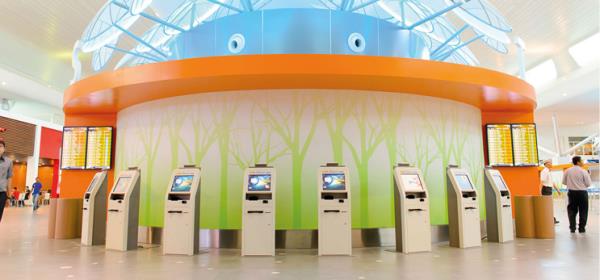10 April 2024

KL International Airport (KLIA) is one of the world’s leading examples of Airports 4.0 done right. Passengers enjoy a streamlined boarding experience, can quickly check in without waiting in a long queue, and can handle work online or surf the internet using convenient networks in the departure lounge.
KLIA managing company Malaysia Airports Holdings Berhad (MAHB) is committed to creating superior connectivity and providing a seamless travel experience for passengers, by moving towards digital and intelligent airports with secure and reliable networks, smarter and convenient applications, and better quality services.
Airports 4.0
Malaysia Airports began its digital transformation back in 2018 with the Airports 4.0 initiative. Projects encompassed infrastructure enhancement, capability development, and digital innovation, with the aim of improving the efficiency of terminal optimization and operations, increasing revenue generation, and enhancing regulatory compliance.
At the heart of Malaysia Airports’ plan was to enhance connectivity and real-time information sharing by connecting all passengers, tenants, airport staff, and other stakeholders to a fully integrated digital ecosystem. The company planned to improve operational efficiency via data and analysis of terminal operations; provide passengers with more control over their journeys and a more personalised experience; redefine airport security and passenger safety using target recognition and intelligent video analysis; and improve employee efficiency through digital means.
However, Malaysia Airports’ original network architecture faced huge obstacles to the implementation of Airports 4.0; the company had to abandon manual configurations to become totally smart.
Airport services and surrounding tenants needed many virtual local area networks (VLANs), and the two core switches were almost fully loaded, preventing new service systems from going live. Additionally, the service systems were manually configured and were prone to faults, resulting in time-consuming and difficult repairs; it took at least ten days to roll out new service systems for airlines, ground handling departments, and airport security. Moreover, air traffic management (ATM) authorities and some airlines required physical isolation for independent networking, a requirement that Malaysia Airports could not meet.
A fully connected fibre solution
Malaysia Airports turned to Huawei, which offered up its Fully Connected Fiber Network Solution - a reliable, agile, simplified, and green technology debuted in November 2023 - which has helped KLIA resolve all its pain points during digital transformation, laying a connectivity foundation for it to make the move from Airports 2.0 to Airports 4.0.
Huawei’s solution adopts an IP + DWDM dual-plane architecture. It capitalises on physical and logical service isolation to provide a highly reliable bearer of services for ATM authorities, airlines, and terminals. The router plane and WDM plane back each other up for cross-domain protection, meeting the lofty requirements of Malaysia Airports’ airlines and ATM authorities for reliable and secure networks.
Huawei’s Fully Connected Fiber Network Solution adopts GPON/XGS-PON technology at the access layer to realise natural Layer 2 isolation and avoid risks like network storms. It uses optical fibres instead of copper cables, which could only cover 100m at most. In addition, the solution features passive aggregation so that fewer ELV rooms are required, creating greener and more efficient airport operations.
The solution also brings with it a high degree of scalability, with no restrictions on bandwidth or distance; and cables do not need to be re-routed. This is because it supports flexible capacity expansion from GE to 10GE high-bandwidth networks. As Malaysia Airports enhances the specifications of its operational system, it needs an increasing number of smart terminals and higher bandwidth - NCE-IP delivers E2E services in one click, meeting the development requirements that will amount over the next 5-10 years.
With Huawei’s help, KLIA took just 4.5 months to migrate and upgrade the entire network; a vast improvement on what would usually be a 12-18 month endeavour.
A tenfold capacity increase

Today, Malaysia Airports’ new networks boasts a tenfold increase in capacity, with port speed ranges from 10-100Gbps, while the core scalability can reach as high as 400Gbps. The new, improved, and secure networks enable Malaysia Airports to implement more digital projects, benefiting passengers, merchants, and staff.
KLIA now gains from automated processes and powerful network capabilities, which enrich the passenger experience, as well as online check-in, which brings shorter queues and less congestion. Passengers can find their flight schedule and boarding gate using a mobile app, achieving a smooth boarding experience that helps the airport effectively manage passenger traffic, reduce congestion at all checkpoints, and ensure passengers can spend time shopping or dining at airport stores.
Moreover, Malaysia Airports has also flexibly configured networks based on airport tenant requirements to prevent broadcast storms caused by the rapid increase of terminals. This improves tenant experience while slashing O&M costs.
With the new solution in place, Malaysia Airports is accelerating the implementation of Airport Collaborative Decision-Making (A-CDM) and cooperating with airline partners by sharing real-time information. This is critical to reducing delays and cutting the O&M costs of airport IT systems, as well as enabling Malaysia Airports to take preventive measures against potential risks.







